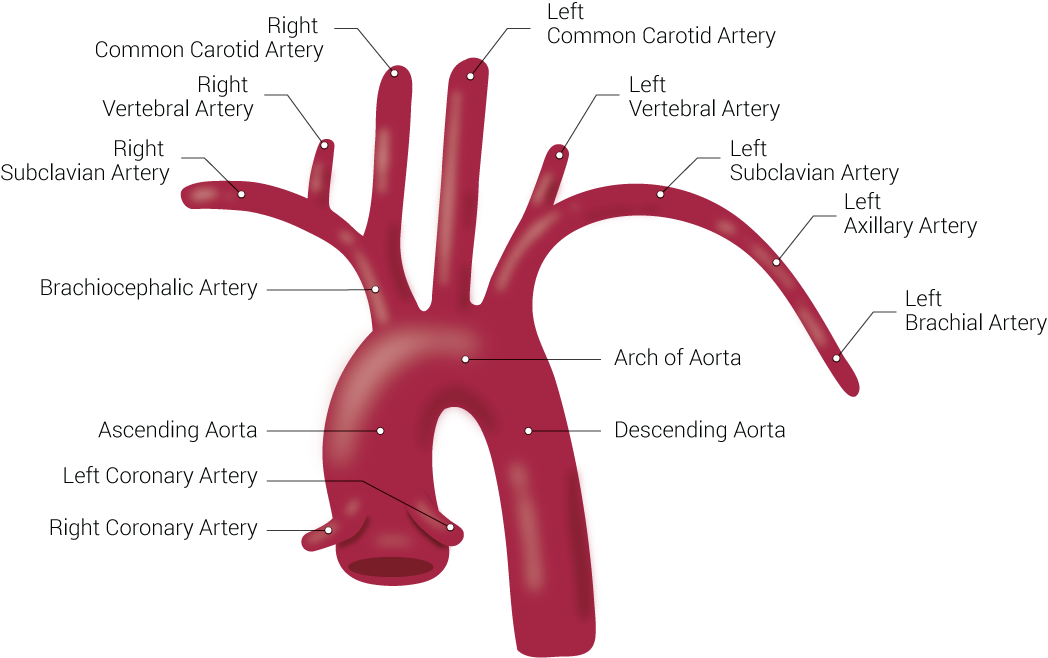[1]
Wang PK, Yen PS, Shyr MH, Chen TY, Chen A, Liu HT. Endovascular repair of tracheo-innominate artery fistula. Acta anaesthesiologica Taiwanica : official journal of the Taiwan Society of Anesthesiologists. 2009 Mar:47(1):36-9. doi: 10.1016/S1875-4597(09)60019-9. Epub
[PubMed PMID: 19318299]
[2]
Rizvi S, Wehrle CJ, Law MA. Anatomy, Thorax, Mediastinum Superior and Great Vessels. StatPearls. 2023 Jan:():
[PubMed PMID: 30137860]
[5]
Popieluszko P, Henry BM, Sanna B, Hsieh WC, Saganiak K, Pękala PA, Walocha JA, Tomaszewski KA. A systematic review and meta-analysis of variations in branching patterns of the adult aortic arch. Journal of vascular surgery. 2018 Jul:68(1):298-306.e10. doi: 10.1016/j.jvs.2017.06.097. Epub 2017 Aug 31
[PubMed PMID: 28865978]
Level 1 (high-level) evidence
[6]
Karacan A, Türkvatan A, Karacan K. Anatomical variations of aortic arch branching: evaluation with computed tomographic angiography. Cardiology in the young. 2014 Jun:24(3):485-93. doi: 10.1017/S1047951113000656. Epub 2013 May 22
[PubMed PMID: 23694814]
[8]
Singh N, Fung A, Cole IE. Innominate artery hemorrhage following tracheostomy. Otolaryngology--head and neck surgery : official journal of American Academy of Otolaryngology-Head and Neck Surgery. 2007 Apr:136(4 Suppl):S68-72
[PubMed PMID: 17398348]
[9]
Harky A, Oo S, Gupta S, Field M. Proximal arterial cannulation in thoracic aortic surgery-Literature review. Journal of cardiac surgery. 2019 Jul:34(7):598-604. doi: 10.1111/jocs.14087. Epub 2019 Jun 18
[PubMed PMID: 31212386]
[10]
Backer CL, Mongé MC, Popescu AR, Eltayeb OM, Rastatter JC, Rigsby CK. Vascular rings. Seminars in pediatric surgery. 2016 Jun:25(3):165-75. doi: 10.1053/j.sempedsurg.2016.02.009. Epub 2016 Feb 22
[PubMed PMID: 27301603]
[11]
Fawcett SL, Gomez AC, Hughes JA, Set P. Anatomical variation in the position of the brachiocephalic trunk (innominate artery) with respect to the trachea: a computed tomography-based study and literature review of Innominate Artery Compression Syndrome. Clinical anatomy (New York, N.Y.). 2010 Jan:23(1):61-9. doi: 10.1002/ca.20884. Epub
[PubMed PMID: 19918870]
[12]
Komatsu T, Sowa T, Fujinaga T, Handa N, Watanabe H. Tracheo-innominate artery fistula: two case reports and a clinical review. Annals of thoracic and cardiovascular surgery : official journal of the Association of Thoracic and Cardiovascular Surgeons of Asia. 2013:19(1):60-2
[PubMed PMID: 22785449]
Level 3 (low-level) evidence
[13]
Qureshi AZ. Fatal innominate artery hemorrhage in a patient with tetraplegia: Case report and literature review. The journal of spinal cord medicine. 2018 Nov:41(6):731-734. doi: 10.1080/10790268.2017.1417802. Epub 2018 Jan 11
[PubMed PMID: 29323630]
Level 3 (low-level) evidence
[14]
Soylu E, Harling L, Ashrafian H, Anagnostakou V, Tassopoulos D, Charitos C, Kokotsakis J, Athanasiou T. Surgical treatment of innominate artery and aortic aneurysm: a case report and review of the literature. Journal of cardiothoracic surgery. 2013 Jun 1:8():141. doi: 10.1186/1749-8090-8-141. Epub 2013 Jun 1
[PubMed PMID: 23725538]
Level 3 (low-level) evidence

